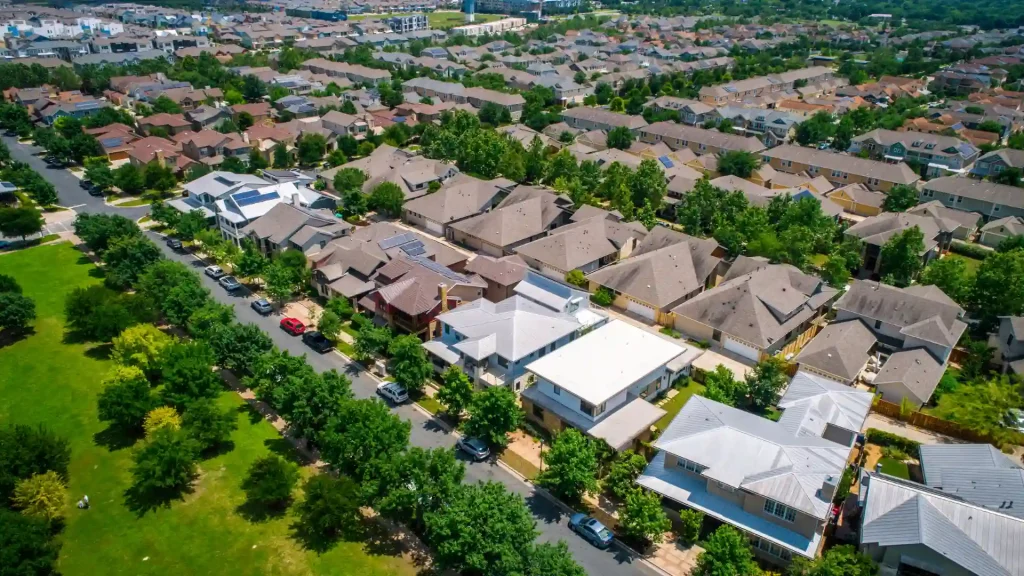Almost 200 mint condition properties have lost their $1 million value tag since the interest rate hikes commenced in May of this year.
A regional property report published this week by CoreLogic, a financial services company headquartered in the US, reveals that property and house values have dropped by 6% or more across the six major popular housing segments in Australia in the past quarter. Almost 200 mint condition properties have lost their $1 million value tag since the interest rate hikes commenced in May of this year.
Sydney in Australia has lost the largest number of million-dollar value suburbs, 66 in all, followed by Melbourne losing 29 and Brisbane 28. Areas in regional NSW saw a dip of 36 properties, with Queensland losing 17 suburbs and Regional Victoria 6 suburbs from the $1 million value list. Eight suburbs in ACT, 3 in Adelaide, and 4 in Hobart also slipped out of the million-dollar club. It is observed that properties lying in the outer ring and regional centers that had previously boomed in the pandemic have lost their million-dollar badge of honour.
Property has always been a premium sector for the land down under. The residential market holds an approximate worth of $10 trillion which is five times the GDP of Australia. Economists believe the downturn faced by the housing market is becoming broad-based with the rise in interest rates, with 87.8% of regional properties reporting a decline in prices. CoreLogic data shows that Australia has faced a decline in property prices for the past six months. On the other hand, SQM research data brings out the rental statistics showing rents have spiked by nearly a quarter in all the five capital cities in the past year alone.
The suburbs in Melbourne, Australia that exited the million-dollar price range are mostly located in the outer east, northeast and southeast regions covering houses in Diamond Creek, Lower Plenty, Gisborne and Keilor. House prices in Croydon North, Forest Hill, and Kilsyth South have been slumping by 7.9%, 8.7% and 8.1%, respectively, over 6 months.
In Brisbane, properties in Gordon Park, Kedron, McDowall, Stafford and Stafford Heights in the north and Fairfield, Mount Gravatt, and Mansfield in the south have exited the list.
Belair and Craigburn Farm, located south of Adelaide, have dropped out of the club in addition to ACT’s Denmark Prospect, Flynn, Fraser, Gowrie, Watson, Weston, Harrison and Macquaire.
The dwelling prices of Sydney have fallen by 10.5% since May, whereas for Melbourne, it has fallen by 6.6% and by 6.3% for Brisbane.
Property sales have softened in the past months, with properties taking up an extra two or three days longer to sell, and sales volume has thereby declined. Regional markets are, however, doing better than capital cities, mainly for two reasons. One, the prices had gone up very fast in terms of dollars during the pandemic; buyers are now facing affordability issues, thereby shrinking the price. Two, the number of properties available for sale in regional areas is low; hence it is preventing larger declines in various regional zones. Real estate experts believe this fall in house prices in Australia was long overdue.
Property Market Predictions for 2023
Experts predict that house prices could fall by 15%-20% before the property market bottoms out. It could set in as soon as the first quarter or first half of 2023. Even if interest further rises up, the renting-buying trade-off will slowly favour the buying prospects. So far, the rapid interest rate spike was squeezing buyers’ borrowing power, making them incapable of property purchases after the boom seen during the pandemic.
Queensland is expected to experience the strongest housing price growth in 2023 due to its population growth and the upcoming Olympic games, and various infrastructure projects. Interest rates will stabilise and then fall gradually over 2023, leading to buyers entering the market and investors seeking better returns. Brisbane and Queensland are predicted to be the cream zones with the best-performing properties in the following year.
